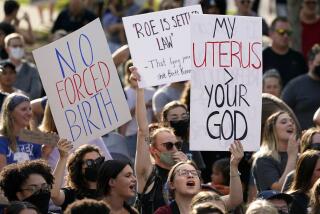Column: Apple breaks new ground in squeezing locals for huge tax breaks while offering almost no jobs
Iowa Gov. Kim Reynolds and the mayor of the tiny suburban town of Waukee (pop. 19,284) basked in the glory of sharing a podium with Apple CEO Tim Cook on Thursday. They came together to announce that Apple would build a $1.3-billion data center in the little town.
They should have hung their heads in shame instead. Apple took them to the cleaners, and their taxpayers will be paying the bill. The politicians talked as though the data center would put Waukee on the map as a first-class high-tech center. The truth is that it will mark Waukee as a first-class patsy.
To bring the project home, Waukee and the state are giving Apple about $208 million in tax abatements. For that, they’re getting a plant that will employ a permanent workforce of 50 people.
It’s a classic example of the ‘pay for fame’ phenomenon....What governor doesn’t want to issue a joint press release with Apple and Tim Cook?
— Greg LeRoy, Good Jobs First
Fifty. That works out to $4.16 million per job. At prices like that, analysts at the subsidy-tracking think tank Good Jobs First have observed, “taxpayers will always lose.” That’s because there’s no way the new employees will pay that much more in state and local taxes than the public services they and their dependents consume.
To be fair, the Waukee deal isn’t the most lopsided among data-center subsidies. That prize goes to, well, Apple, which mulcted North Carolina for $321 million in incentives for 50 jobs in 2009. The Iowa package ranks second. Google, Facebook, Microsoft and Yahoo also have inked deals costing states and localities seven-figure sums per permanent job.
These deals are typical of those extracted from politicians by companies with high-tech luster. “It’s a classic example of the ‘pay for fame’ phenomenon in economic development,” Greg LeRoy, executive director of Good Jobs First, told me by email. “What governor doesn’t want to issue a joint press release with Apple and Tim Cook?”
Just two weeks ago, Wisconsin officials and President Trump were boasting about a $3-billion soaking they took to attract Foxconn, the Taiwan-based electronics manufacturing firm, to build a factory in that state.
We reported that the deal put the “con” in Foxconn, since there’s no guarantee that employment at the plant will come anywhere near the 13,000 promised by the company. The Wisconsin legislature approved it anyway.
Data centers such as the Apple facility are especially shiny baubles to dangle before suckers. That’s because they have the veneer of high-tech, even though in practical terms they’re low-tech.
Apple’s facility will provide a technical backbone for the company’s App Store and services such as its Siri natural-language assistant. But once it’s up and operating, it will mostly run by itself and probably can be overseen and monitored remotely.
Apple described the center in a press release as “state of the art,” but in today’s digital world that’s code for “robotic.” That’s why, after employing 500 construction workers for two years to build the place, Apple will need only 50 humans on-site to run it. Apple described the arrangement cleverly, stating it will “create over 550 construction and operations jobs,” without specifying how this big number would be broken down.
That underscores the truth about these data centers, which tend to look like Wal-Mart warehouses from the outside. As Good Jobs First observes, data centers are capital-intensive in the construction phase, and low-labor after that. The organization suggests that incentives be limited to $50,000 per permanent job. That would bring the Apple subsidy to $2.5 million.
Apple says it will donate “up to $100 million” to an infrastructure fund in Waukee, including money for a youth sports center. But even if it ponies up the full amount, that still leaves the town deeply in the red.
Nevertheless, local boosters described the $208-million giveaway as a deal that will cement the Des Moines region’s reputation, such as it is, as a Midwest Silicon Valley — the area already bills itself as “Silicon Prairie.”
“Having brand names, having Apple, having Facebook [and] having Microsoft in this community sends that powerful message across the world that we are [a] tech center not only for the country but for the world,” said Jay Byers, the head of a local business group called the Greater Des Moines Partnership, when the subsidy was announced. But he’s wrong. The message it sends is that Iowa, like its “Silicon Prairie” neighbors, is for sale, and cheap.
Keep up to date with Michael Hiltzik. Follow @hiltzikm on Twitter, see his Facebook page, or email michael.hiltzik@latimes.com.
Return to Michael Hiltzik’s blog.
UPDATES:
1:52 p.m.: This post has been updated with the estimated 2016 population figure for Waukee, Iowa.







